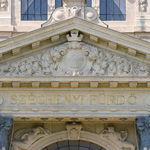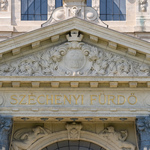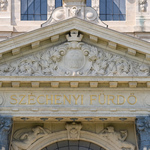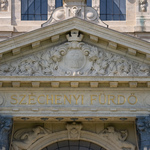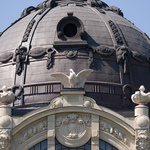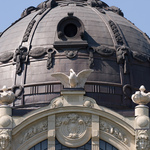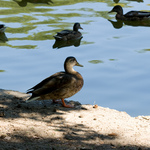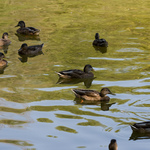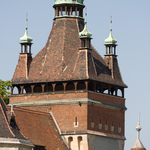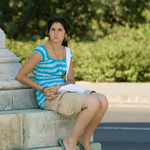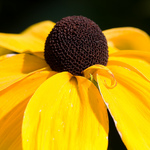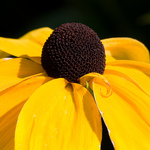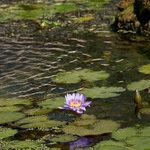Rechercher un objectif
Sigma 150mm f/2.8 APO MACRO EX DG HSM
Images plein formatLes objectifs générant des images au format APS-C sont conçus uniquement pour les appareils numériques. Ils ne peuvent pas être utilisés sur des appareils aux capteurs plus grands que le format APS-C. Ces objectifs ne sont pas non plus adaptés aux appareils argentiques. AF à ultrasonLes objectifs équipés d'un mécanisme de mise au point à ultrason tendent à être plus silencieux et plus rapides que les objectifs à mise au point traditionnelle. No stepping motor AFLenses with stepping motor focusing mechanism are better for contrast based focusing, and are quiter and faster than traditionally focusing lenses. Une ou plusieurs lentilles LD sont utiliséesLes lentilles LD (faible dispersion) permettent de réduire les aberrations chromatiques. Non stabiliséLa stabilisation d'image permet de réduire le flou causé par le tremblement de la main, particulièrement lorsque la distance focale est importante ou que la luminosité est faible. Suivant la règle de réciprocité, la stabilisation d'image peut améliorer le stop d'un facteur 1 à 3 comparativement à un objectif non stabilisé. Monture métalliqueLes objectifs bon marché sont habituellement équipés d'une monture plastique, tandis que les objectifs plus coûteux, de niveau professionnel, possèdent des montures métalliques. Généralement, les montures métalliques ont une durée de vie plus importante. Il est utile d'en avoir de rechange lorsque l'on change fréquemment d'objectif. Si l'on utilise un appareil photo essentiellement avec un seul objectif, le matériau de la monture n'a pas tant d'importance. Mise au point interneLe barillet des objectifs à mise au point interne ne change pas de longueur durant la mise au point. La lentille frontale est fixeLa lentille frontale fixe ne tourne pas lorsque l'on zoome et/ou que l'on réalise la mise au point. Ceci permet au photographe d'utiliser des pare-soleil en forme de pétales. Les lentilles frontales fixes rendent également beaucoup plus simple l'utilisation de filtres polarisants. Pas de prise en charge des filtres drop-inLes filtres drop-in sont utilisés dans les objectifs pour lesquels, soit la lentille frontale est trop grande, soit le champ de vision ne permet pas l'utilisation de filtres traditionnels à l'avant de l'objectif. Généralement, les télé-objectifs lumineux et les objectifs à très grand angle prennent en charge ce type de filtre. |
|
Sigma 150mm f/2.8 APO MACRO EX DG HSM Caractéristiques techniques
| Monture(s) disponible(s) | Canon EF, Nikon F, FourThirds, Sigma |
| Application(s) | Portrait, Sports, Gros plan |
| Catégorie(s) | Télé-objectif à focale fixe , Macro |
| Multiplicateur | 1× |
| Stabilisateur | non |
| Distance focale | 150 mm (à focale fixe) |
| Construction optique | 16 éléments dans 12 groupes |
| Angle de vue |
35 mm: 16.4° numérique: 9.5° |
| Nombre de lamelles de diaphragme | 9 |
| Ouverture maximale | f/2,8 |
| Ouverture minimale | f/22 |
| Distance minimale de mise au point | 38 cm |
| Grossissement | 1× |
| Taille de filtre | 72 mm |
| Dimensions | ∅ 79.6 × 137 mm |
| Poids | 895 g |
| Notes |
|
| Vitesse AF | 1 s. (de gros plan à l'infini) |
| Son AF | |
| Mise au point interne | oui |
| Zoom interne | Non disponible |
| Lentille frontale fixe | oui |
| Type de monture | métal |
| Étanchéité poussière/humidité | Non disponible |
| Filtre drop-in | non |
| AF à ultrason | oui |
| Stepping motor AF | non |
| Cercle image APS-C | non |
| Lentille LD (faible dispersion) | oui |
| Étui rigide | Non disponible |
| Étui souple | Non disponible |
| Pare-soleil |
LH780-03 pare-soleil imprimable |
| Adaptateur pour trépied | Non disponible |
| Ce produit n'est plus au catalogue fournisseur. | oui |
Sigma 150mm f/2.8 APO MACRO EX DG HSM Critiques
Other reviews
- Sigma 150mm f/2.8 APO MACRO EX DG HSM critique à www.fotoaparat.cz (anglais)
- Sigma 150mm f/2.8 APO MACRO EX DG HSM critique à www.ephotozine.com (anglais)
- Sigma 150mm f/2.8 APO MACRO EX DG HSM critique à dc.watch.impress.co.jp (japonais)
- Sigma 150mm f/2.8 APO MACRO EX DG HSM critique à www.the-digital-picture.com (anglais)
- Sigma 150mm f/2.8 APO MACRO EX DG HSM critique à pixinfo.com (hongrois)
Actualités Sigma 150mm f/2.8 APO MACRO EX DG HSM
- Tamron SP AF60mm f/2.0 Di-II Macro
- Nikkor AF-S DX 85mm f/3.5G ED Micro
- Carl Zeiss Distagon T* 35mm f/2.0 ZF
- Sony SAL2875 28-75mm f/2.8 SAM
- Carl Zeiss Distagon T* 28mm f/2 with EF mount
- Tamron SP AF17-50mm f/2.8 XR Di II VC LD Aspherical
- Carl Zeiss Distagon T* 2,8/21 for EF mount
- Carl Zeiss Distagon T* 3,5/18 ZE
- SIGMA 70-300mm F4-5.6 DG OS
- Nikkor AF-S 16-35mm f/4 G ED VR
Sigma 150mm f/2.8 APO MACRO EX DG HSM Avis de consommateurs
Avis consommateurs les plus utiles en provenance d'Amazon
Sharp. 2.8 is nice but be warned...
23 février 2006
This lens is very sharp. I usually buy Canon L but I made the exception for this one after reading other reviews. This lens is on par with L sharpness and gives you some good working distance if you are shooting something that scares easy. Be warned though, if this is your first macro lens and/or first experience with macro photography, when you get close, your focus area is tiny and particularly at f2.8! If you don't already have one you may want to get a tripod as well. I was able to get some hand held shots with a lot of light from a window so I could use higher f stops.
Difficult to use
11 mars 2006
I am a beginner in using SLR. I used this lens to take several photos of my watch. this lens will hunt around for about 2 times if you set it to full focus range. The viewfinder looks reasonably bright. HSM is silent, seems to be silent than my Canon 50 F1.4 USM. However, this lens is SUPER difficult to use. It is a 150mm Macro lens. The depth of field is so short when focusing close and at F2.8. How short is that? just take a look with the watch photo i uploaded. (the 3 hands are just about total thickness of 1mm ...) So, if you want to have decent depth of field, you need to narrow it down to about F11 or even smaller. You will need a tripod in this case... And, Even slight movement of flowers caused by wind will make it out of focus... ( I actually use AI-servo when using this lens to take flowers~!) Don't spend money on this lens unless you are a pro in macro photography. Wait for the 70-200 Macro...
Excellent non Canon L lens
16 octobre 2006
I have numerous Canon L lens, the 135L, the 200L, 24-70L, the 70-40L, additionally the canon 60 mm macro lens, the 50mm f/1.4, and the 85 f/1.8, lens; this lens and the Tamron 200-500 zoom are the only non Canon lens that I own. This lens stays on my camera more then any of the above lenses. The 2.8 aperture, the ability to do macro and 150 mm distance gives it such flexibility that it stays on my camera 1Ds the most and it is often on my 20d (the 1.6 multiplier makes it a little less flexible).
A great lens!
18 janvier 2007
I am relatively new in photography and in my little experience I have only used Canon lenses for my camera, an EOS 350D. Eager to get involved in macro photography, I bought this lens a couple of weeks ago and I was extremely impressed when I got it. It is, of course, bulky but it has a magnificent sense of touch and an absolutely silent and quick focusing mechanism. I can't say about picture quality as I haven't tested it much yet (everything I shot so far was great), but it was a wonderful surprise to see that it came with its hood, ring and case, all in such an attractive price! Well done, SIGMA!!!
Excellent Macro despite limitations
29 octobre 2005
I had a Canon 100mm f2.8 Macro and it was working quite well for me but I longed for a little more working distance. When Sigma came out with the 150mm f2.8 Macro, I tried researching it but couldn't find much info because it was such a new lens, I found the MTF charts on the Sigma Website and it was amazing. This lens was very close to the performance of the Sigma 180mm macro and Canon's famed 180mm f3.5 L. So I went ahead and bought it. It was a little pricy but I thought I could always return it if I didn't like it.
My first impressions taking the lens out of the box was very positive. It was quite compact for the focal length and was very well made. It balanced quite well on my 20D. I never liked Sigma's EX finish but I could live with it. The EX finish looks cheap to me,particularly the golden ring, and the EX badge, but it's better than Sigma's old design. The only thing I like about the EX finish is that it seems very durable. Even after heavy use there are no marks or scratches on the lens body and every time I wipe the lens body with a damp tissue, it just looks like brand new. The focus ring is nicely ribbed and wide but it didn't have the kind of damping Canon L lenses have, so it felt a little loose. The tripod ring is made of the same material as the lens body itself, but it didn't feel as smooth as the Canon's L like the 70-200 2.8IS and the 300mm f4 IS. One advantage Sigma's tripod rings have over Canon is you don't have to take it off the tripod to remove the lens. You just pull a knob and the ring opens allowing you to remove the lens. This is good if you have it all set on the tripod and want to quickly remove it for some hand held shots.
As far as it's optical performance is concerned, it's an absolute gem. When I review the pictures from this lens, all worries and niggles about price, finish etc dissapear and I'm glad I own it. I compared it against Canon's 135mm F2L which is one of Canon's sharpest lens,and this lens compares very favourably against it. In fact it is just as sharp as the 135mm at comparable apertures. But the 135mm is a stop faster and has faster focussing but that's a whole different story.
In short the lens is everything one can expect out of a macro. Excellent build, very sharp, good colors, excellent bokeh (out of focus areas). What else would one want? The focussing is slow, but it's a macro lens and that's how macro lenses are. The minimum aperture is 22 which may deter some, but I don't shoot slower than 22 anyway because of diffraction limitations.
This lens is just perfect for it's intended purpose. Needless to say, I sold my Canon 100mm in a jiffy.
AWESOME LENS!
23 avril 2006
This lens is fast and extremely sharp. I am using it on a D200 and it is great. I am deployed in Iraq and this lens is one I can feel comfortable about walking around with. It's built like a tank. It accepts the teleconverters which makes it even better. Buy this lens from 47th St Photo. Best prices.
Sigma gets an A on this one.
28 mars 2007
I have the Nikon 60 Micro lens and wanted something with more working distance. In the Photozone.de test, it was amazing. Very high resolution, even at f/2.8. And very low CA's(chromatic abberations). So I bought it and does it deliver that kind of performance? Yes it does! Sharpness and color redention was stunning. And at 1:1(life size on the negative or digital sensor), there's more than 7 inches working distance. Build quality is excellent. It's mostly metal construction. The focus ring has a nice dampened feel to it. The new Sigma rear caps fit tighter and do not come off. But they're a little harder to mount. About autofocus performance, it's fast, but hunted in low light with the Nikon D50 while shooting motocross. But that's a weakness of the camera body, not the lens. On the F100(a high end Nikon film camera), it was lightning fast and dead on. Yes it is a full frame lens, so it can be used on 35mm cameras also. There's a tripod collar and it makes for a well balanced setup when on a tripod. The collar is removable making it easier to do handheld shooting. The maximum aperture of f/2.8 allows more flexibility in low light. The filter thread is 72mm, and filters this big get expensive. It is a good all around telephoto-sports, portraits, landscapes...you name it. Just because it's labeled a macro doesn't mean a lens is good for macro only! It's not cheap, but if you want a solid performer that's great for all occasions, this just may what you're looking for.
Sigma 150mm f/2.8 Macro lens
15 mai 2007
great lens and a great price. it has a nice feel to it. not too heavy and not too light. autofocus is somewhat slow but that is expected from a macro lens. otherwise its a great lens


